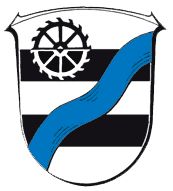Birstein: Difference between revisions
Jump to navigation
Jump to search
Knorrepoes (talk | contribs) m (Text replace - "'''Origin/meaning :'''<br/>" to "====Origin/meaning====") |
Knorrepoes (talk | contribs) m (Text replace - "|width="15%"|50 px|right |}" to "|width="15%"|50 px|right |}<seo title="Wappen, Gemeindewappen" />") |
||
| Line 3: | Line 3: | ||
|width="70%" align="center" |'''Heraldry of the World<br/>Civic heraldry of [[Germany]] - [[Deutsche Wappen|Deutsche Wappen (Gemeindewappen/Kreiswappen)]]''' | |width="70%" align="center" |'''Heraldry of the World<br/>Civic heraldry of [[Germany]] - [[Deutsche Wappen|Deutsche Wappen (Gemeindewappen/Kreiswappen)]]''' | ||
|width="15%"|[[File:Germany.jpg|50 px|right]] | |width="15%"|[[File:Germany.jpg|50 px|right]] | ||
|} | |}<seo title="Wappen, Gemeindewappen" /> | ||
Revision as of 16:47, 5 November 2012
| Heraldry of the World Civic heraldry of Germany - Deutsche Wappen (Gemeindewappen/Kreiswappen) |
BIRSTEIN
State : Hessen
District (Kreis) : Main-Kinzig Kreis (until 1974 Gelnhausen)
Additions : 1971 Bösgesäß, Bös-Gesäß, Fischborn, Hettersroth, Kirchbracht, Oberreichenbach ; 1972, Illnhausen, Unterreichenbach, Untersotzbach; 1974 Oberland (1971 Lichenroth, Mauswinkel, Völzberg, Wüstwillenroth, Wettges), Obersotzbach
Origin/meaning
The arms were officially granted on ??
The two black bars are taken from the arms of the Counts of ISenburg(-Birstein), who played an important role in the local history. The wavy bend symbolises the many (small) streams in the municipality. The water-mill wheel symbolises the many former water-mills in these rivers. The 16 blades refer to the 16 villages and hamlets in the municipality.

